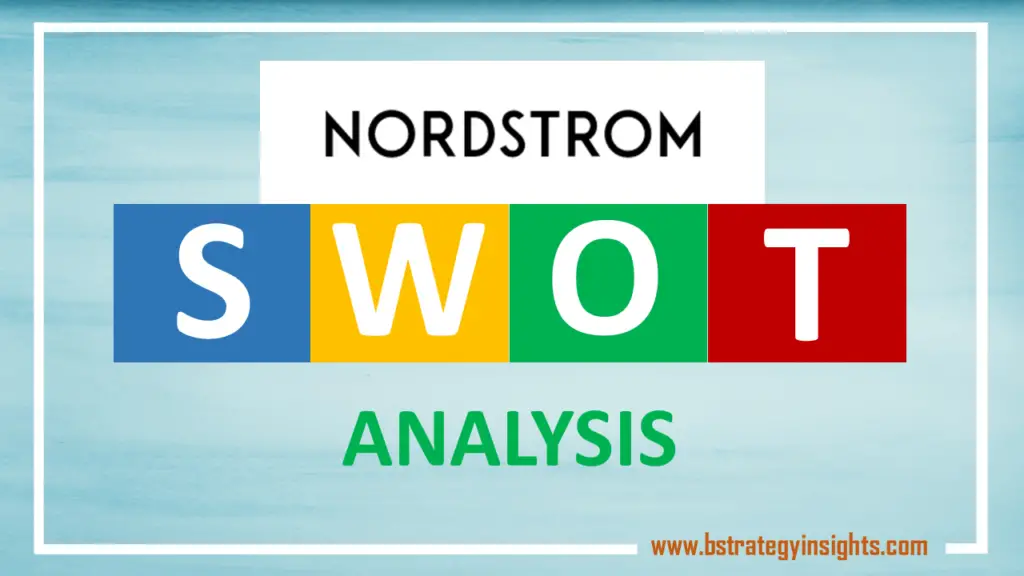
Nordstrom is an American luxury department store chain. The company, Nordstrom Inc., started its operations in 1901. The company began as a shoe store initially. However, it has expanded its business over the years to become a full-line retailer with other products. These include departments for clothing, footwear, handbags, jewelry, accessories, cosmetics, and fragrances.
Nordstrom’s founders were John W. Nordstrom and Carl F. Wallin. John emigrated from Northern Sweden to the United States. Similarly, The founders started their business as Wallin and Nordstrom. However, the store changed its name in 1963 to Nordstrom Best, following the purchase of Best’s Apparel of Seattle. It was also when the company first started its apparel line.
Over the years, the company has gone through many ups and downs. Currently, Nordstrom is still a family-run company. Similarly, Nordstrom has also acquired various companies in the same industry over the years. On top of that, Nordstrom has also expanded its business to Canada and Puerto Rico. Overall, Nordstrom currently operates over 498 stores. These stores come under the brand itself or one of its subsidiaries.
Nordstrom also owns various subsidiaries. These include HauteLook, Nordstrom Rack, Trunk Club, and Jeffrey Boutique. In 2018, the company reported $15.86 billion generated in revenues. These revenues contributed to $837 million in operating and $564 million in net income in the year. 2018 was the highest revenue for the company. However, these revenues have plummeted since then.
In 2019, Nordstrom reported it had generated $15.132 billion in revenues. However, the company only made $10.36 billion. This significant drop in revenues was attributable to the COVID-19 pandemic. Nordstrom’s business model was also responsible for these. However, Nordstrom still is one of the largest clothing chains in the US, with over 74,000 employees in 2018.
Nordstrom – At a Glance
Nordstrom’s company profile is as below.
| Name | Nordstrom, Inc. |
| Website | www.nordstrom.com |
| Founders | John W. Nordstrom and Carl F. Wallin |
| Year founded | 1901 |
| Chief Executive Officer (CEO) | Erik Nordstrom |
| Chief Financial Officer (CFO) | Anne Bramman |
| Headquarters | Seattle, Washington, US |
| Type of corporation | Public |
| Revenues (2020) | $10.36 billion |
| Key products/ services | Clothing, footwear, handbags, jewelry, accessories, cosmetics, fragrance, home furnishing, wedding |
| Key competitors | TJX Companies, Macy’s, Kohl’s, Ross Stores, Gap, Nike, Ross Stores, L Brands |
| Key subsidiaries | HauteLook, Nordstrom Rack, Trunk Club, Jeffrey Boutique |
Nordstrom SWOT Analysis
SWOT analysis is a tool that companies use to determine their strengths, weaknesses, opportunities, and threats. Through this tool, companies can gain valuable insight into their operations and external environment. Nordstrom’s SWOT analysis is as below.
Nordstrom’s Strengths
Strengths refer to internal factors that provide a company with a competitive advantage over others. These strengths may come from the company’s history, exclusive resources, operations, etc. Some of Nordstrom’s strengths are as below.
Products
Nordstrom has a diversified portfolio of products that it offers its customers. The company also caters to all customers through its various brands. As mentioned, these include HauteLook, Nordstrom Rack or Trunk Club. The company’s product line caters to the needs of all customers. Nordstrom’s wide selection of products gives it a significant competitive edge over others.
Finances
Nordstrom has been active in the clothing chain business for over a century. The company has successfully maintained strong financial performance and position over the years. In 2018, Nordstrom’s assets amounted to $7.89 billion with total equity of $873 million. The company has substantial finances to back its operations and continue its growth in the future.
Market share
Nordstrom is among the leading names in the US clothing chain store business. The company competes with leaders, such as TJX Companies, Macy’s, Gap, Kohl’s, Nike, etc. On top of that, its current customer base makes it one of the largest names in the industry. Nordstrom also has a substantial market share in the online market, which attributes to its overall revenues.
Partnerships
Nordstrom partners with various other brands, giving it a competitive edge over others. The company currently partners with brands, such as Top Shop, Greats, Reformation, Stella, Dot, etc. These partnerships also provide Nordstrom with a competitive advantage in the digital market. Some of the competitors have not adopted this strategy.
Nordstrom’s Weaknesses
Weaknesses are factors that reduce the competitive edge that companies have. These factors are usually the strengths of competitors and are the opposite of strengths. Some of Nordstrom’s weaknesses are as below.
Pricing
Nordstrom’s merchandise prices are a concern for many customers. Despite its discount products under Nordstrom Rack, Nordstrom still has a pricey nature. Some of its competitors provide specialized discount products that drive away customers from Nordstrom’s business. The primary segment that Nordstrom misses out on with its pricing includes middle or low-income customers.
Global reach
Currently, Nordstrom only operates in the US, Canada and Puerto Rico. Among these, the US market is the primary source of income for the company. Nordstrom has a decent market share in these markets. However, it also misses out on other locations where the competition strives. Nordstrom has not expanded its business to other countries, lagging behind many competitors.
Investments
Nordstrom has been active in the investments market over the year. The company has acquired many similar companies and brands. However, some of these investments have proven to be expensive and risky. The company has also suffered from several failed ventures in the past. Investment is an area where the company has faced weaknesses while competitors have flourished.
Nordstrom’s Opportunities
Opportunities are external factors that can result in future strengths. These factors are usually available to all companies within the market or industry. However, it is for a company to exploit these to benefit from them. Some of Nordstrom’s opportunities are as below.
Global expansion
Currently, Nordstrom has reached a stable point in most of the markets in which it operates. As mentioned, the company has failed to expand its business in other markets. However, that presents an opportunity for Nordstrom to explore more locations. The company can significantly increase its revenues by entering other markets and growing its global reach.
Acquisitions
Despite the failed investments, Nordstrom has also made some valuable acquisitions. Nordstrom can further improve in this area. On top of that, the company can also use acquisitions as a vehicle to expand into new markets. Similarly, Nordstrom can also further diversify its products through investment in other brands.
E-commerce
E-commerce sales contribute to a substantial portion of Nordstrom’s overall revenues. However, the company can further improve in this area. In 2020, Nordstrom suffered a dip in revenues. This dip was primarily attributable to the COVID-19 pandemic. However, the company could have reduced the effect by capturing more of the digital market share. Nonetheless, expanding its digital business is a substantial opportunity for Nordstrom to increase its customer base.
Nordstrom’s Threats
Threats come from external sources and are the opposite of opportunities. These have the potential to adversely impact a company’s business and turn into a weakness. Some of Nordstrom’s threats include the following.
Competition
The US clothing store chain market is highly diluted. There are several existing competitors while new ones are emerging as well. Similarly, Nordstrom faces a significant threat from its competitors. Being one of the top names in the market makes the company a top target for the competition. As these competitors increase, Nordstrom’s business will suffer.
Counterfeit
Counterfeit products have become a critical issue for many retail chain stores. Nordstrom also faces these problems. Practically, the company caters to a specific customer base and offers high-quality products. If the counterfeit threat materializes, it can cause controversies for the company. The counterfeit products market is booming and causing losses for many companies.
Economic recession
Recently, Nordstrom suffered a significant dip in revenues due to the ongoing pandemic. Experts believe that this pandemic will cause more economic problems in the future. If it happens, an economic recession can be significantly detrimental to Nordstrom’s business. Nordstrom’s products primarily include luxurious items, which are notorious for underperforming in adverse economic conditions.
Conclusion
Nordstrom is one of the leading clothing store chains in the US market. The company has captured a decent market share over more than a century of its operations. Nordstrom has suffered a decrease in revenues due to the COVID-19 pandemic. However, the company is still competitive. Nordstrom’s SWOt analysis is provided above.


